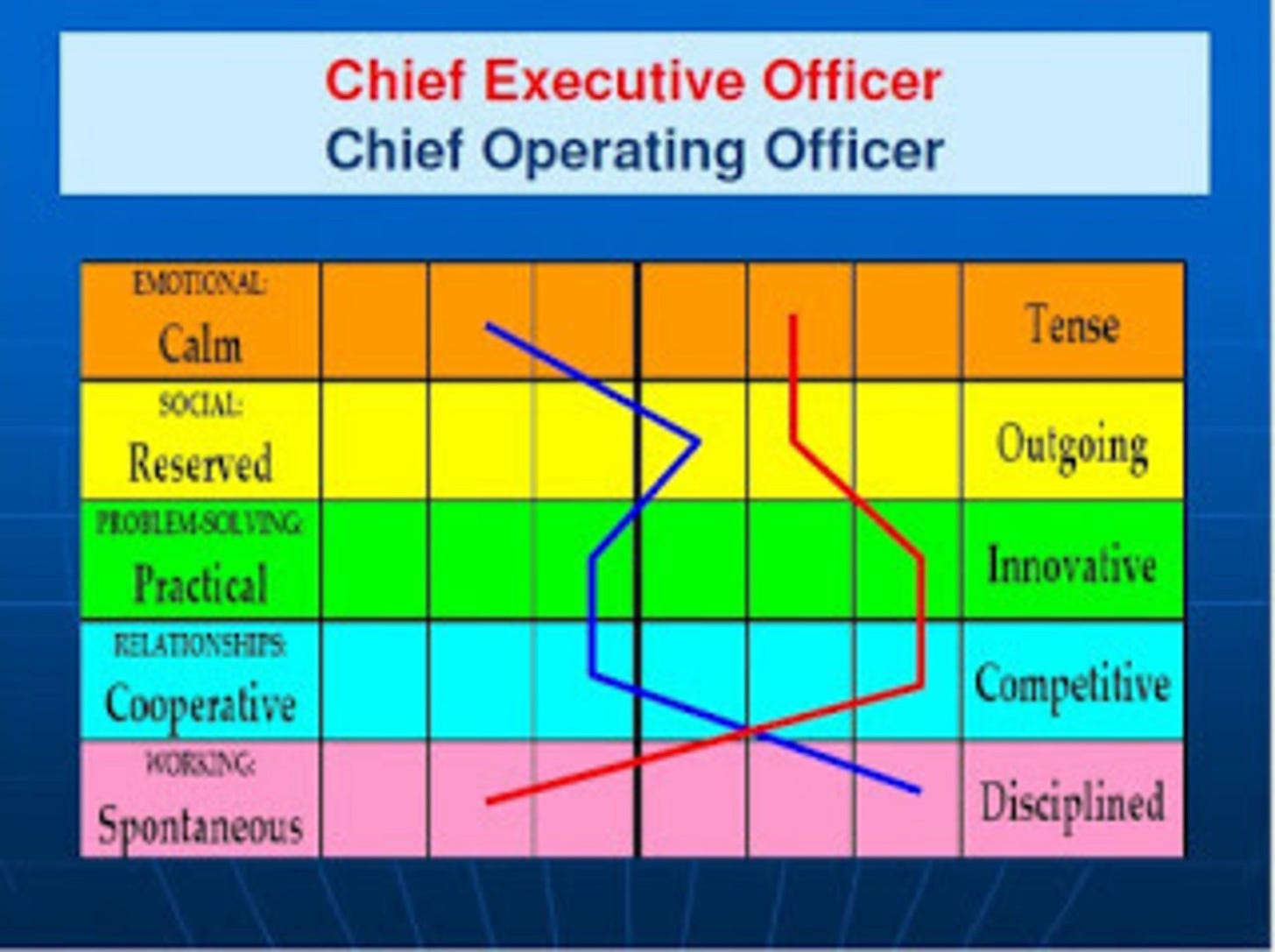There is a large gap between the qualities people want in their leaders and the kinds of people who seek positions of power. — Harry Levinson
Most of us go to work to earn a living. Most of us have a boss* at work. Bosses have great power, the exercise of which has a large impact on everyone who works for them. So the nature and behavior of leaders is a very important human issue.
*{Boss: from Dutch baas or baes; meaning master or ship’s captain}
Consider the following leader profile ⬇️
High energy
Extroverted, natural networker, loves big groups
Creative/innovative
Political
Likes to talk (and talk and talk and …)
“Multi-tasker”
Competitive
Likes to exercise power
Good at marketing/sales
Doesn’t listen very well
Big ego/narcissistic (it’s all about them)
Reactive, impulsive
Not good with the details
Weak follow-through and timely task completion
Irritable under pressure
Lacks emotional/social intelligence
Needs people to keep them on track and manage the details of execution but gets angry with them when they do
Many of us have worked for this person. Some of us ARE this person! Turns out that people with this style are drawn to the leader role because it plays to their strengths (items 1- 9) and avoids (for a while anyway) their weaknesses (items 10–17).
The dark side of charisma
Hire for character. You can always develop skills later on the job. (from a hiring manual of the Japanese emperor’s court)
People fitting the profile above can be enormously attractive and appealing/seductive for brief periods of time (job interviews, pitch meetings, etc.). But if you are a peer or employee of this leader, you discover that the “dark side” of their behavioral style surfaces eventually.
One area where I have seen this type of leader cause real damage to their organization is in the people management sphere. These leaders basically view themselves as the HR department (they will let the VP/HR handle the “boring” things like compensation and benefits and labor law issues). They believe that their judgments about people are infallible. They make snap judgments, often falling in love with candidates they interview and then becoming deeply disappointed and devaluing them once they are hired.
They handle the critical area of performance management as they do everything else: impulsively, intensely and with little predictability or follow up. People who work for this leader often find they are investing more time in avoiding the boss’s wrath than in being creative in their job. They eventually feel unappreciated and abused and, if they are A-level talent, they bail at the first opportunity (costing the company at least 5 times their annual salary to replace).
Power and its abuses
Nearly all (people) can stand adversity, but if you want to test a (person’s) character, give (them) power. — Abraham Lincoln
The need for a behavioral consultation around a toxic leader is normally triggered by a human resource “crisis” (performance failures, talent flight, a lawsuit for harassment or wrongful termination, unresolvable conflict, cratering finances etc.). The consultation request is usually framed in terms of coaching the leader, as in “FIX this guy!” (it’s usually a guy, but not always). I’ve done that, but frankly the results were unimpressive.
We got a bigger better outcome in a consultation about the CEO of a biotech company where some indispensable staff (including the Chief Science Officer) were threatening to quit rather than be further abused by the CEO. Rather than coach the tyrant as intially requested, I instead served as a diplomat and mediator between the CEO and the VP/HR (with an able assist from the COO) in their legitimate spheres of operation. With a stable cease-fire in place, we built a rational data-driven and humane talent management infrastructure that enabled people to feel safe(r) and succeed together over time.
The tricky part was confronting the CEO with the destructive nature of his competition with the VP/HR for control of the human resource function, and creating a “boundary” around the HR space so the VP could do their job. This notion of a boundary was a new and uncomfortable concept to the CEO (“Boundary? What’s that? Le business c’est moi!”). Struggling over defining (writing a better job description) and defending that line on the org chart, in order to rescue the VP/HR (and everyone else) from a hostile takeover by the CEO, was the heart of the consultation.
If this type of leader can tolerate my “meddling” in their affairs long enough, the results are generally good (though requiring periodic review to prevent recidivism to old practices). In one case the leader fired me out of frustration with any boundaries being imposed on their sphere of control. In the case above, a savvy board chair gave the CEO an ultimatum that “If the consultant goes, you go next!” which contained their behavior and bought me and the VP/HR and COO more time to engineer better talent selection/hiring and performance management processes (including of the CEO himself, which is a good story in itself!).
These are difficult consulting challenges but, with the right approach and resources, satisfying outcomes can accrue to the benefit of the company and all the people working there. But as always, it’s better to hire for character to prevent these hurricanes downstream. In the hiring manual for the Japanese emperor’s court mentioned above, the family and friends of every candidate for a leadership position were interviewed about the candidate’s behavior and character. Can you imagine doing this in the modern corporate environment? We do have a lot to learn from “old” wisdom!




I'm surprised you were not immediately tossed out by the CEO of every company that brought you in. But in my experience board members are there to support the CEO, not to direct the organization.
That Japanese emperor's court was right! What a great adage to remember.